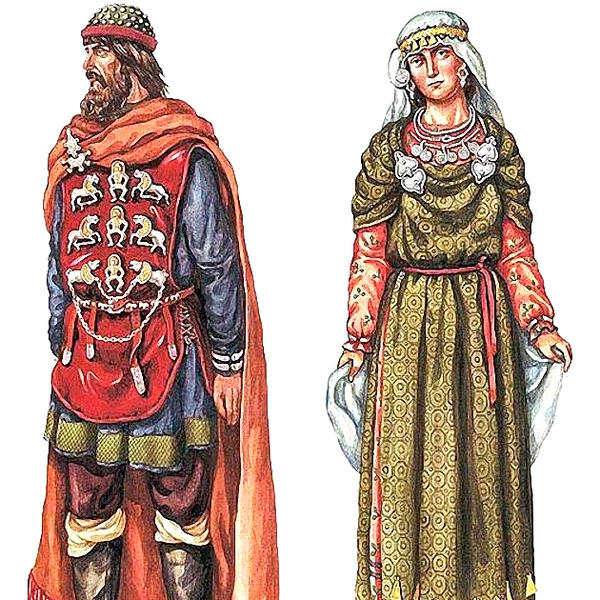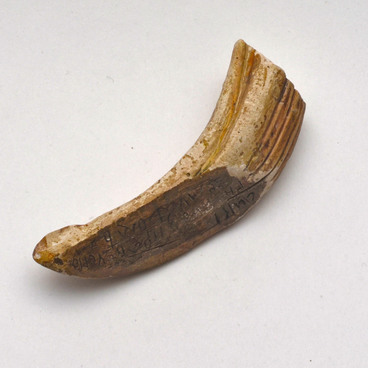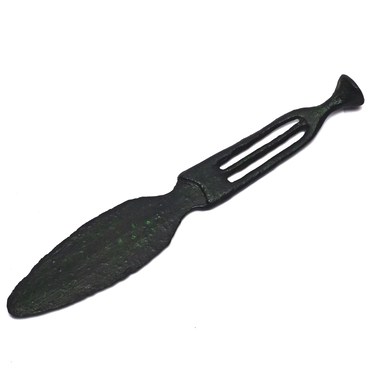In the medieval period, metallic brooches were common in men and women. They were used instead of buttons and other fasteners to join coat flaps, belts, shirt and dress collars, and the sleeves that were too wide. Brooches with various ornamented trimmings or inserts were also used as an adornment. Brooches of gold and silver were common in wealthy and noble men, while bronze brooches were naturally cheaper.
Early Slavic digitate brooch
Время создания
VI–VII cc
Размер
14x6,5 cm
Техника
Сast bronze
Коллекция
Выставка
2
Открыть в приложении#3
Early Slavic digitate brooch
#2
#12
In the VI–VII cc., digitate brooches were popular among Slavic tribes. Those brooches consisted of two metal plates joined by a short arch, a needle, a clasp, and a spring that kept the fastener open. The upper plate resembled an open human palm with splayed fingers, digitus in Latin, and this is where the brooch takes its name from.
Digitate brooches
#11
Brooches usually had five or, more rarely, seven protrusions. Germanic tribes used to decorate them with images of animal heads or fantastic beasts, but the Slavs simplified the shape and trimmed their brooches with the simple-shaped roundish fingers without any patterns on the surface.
#13
Digitate brooches were worn by men and women
Digitate brooches were often worn by women as part of their festive vestments. They were usually worn over the shoulders in pairs: that habit was picked by the Slavs from the Germanic people. Such fasteners are also referred to as the Antes-type, by the name of Antes, the ancient Byzantine name for Slavic tribes.
#9
The brooch in the collection of Bryansk State Regional Ethnography Museum was made in the XVI–XVII cc. Its parts were cast from bronze individually and then joined. The upper and the lower plates bear a spiral pattern: ancient Slavs believed that spirals were symbols of the flow of time and used them as protective charms. The lower part of the fastener had symmetrical protrusions resembling animal horns.
#10
The early Slavic bronze brooch has been in the Museum’s collection since the 1990’s. It was bought from one of the local antique shops. It is not known for certain who found the ancient ornament and where it was found but it was found by accident rather than during some archaeological digging.
By its shape and ornamentation, the brooch resembles the adornments found in the Gaponov treasure which consisted of bronze temple rings, necklaces, bracelets, and belt buckles. The treasure found on the bank of the river Seym by workers who were laying a pipeline there. The same findings were used as the reference point by historians to determine the age of the brooch in the museum’s collection.
#14
State Budgetary Cultural Institution Bryansk State Regional Ethnography Museum
читать дальшескрыть
00:00
00:00
1x
Early Slavic digitate brooch
Время создания
VI–VII cc
Размер
14x6,5 cm
Техника
Сast bronze
Коллекция
Выставка
2
Открыть в приложении
Поделиться





